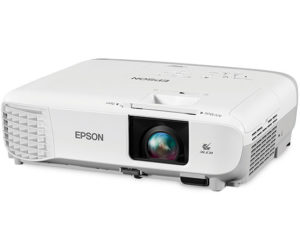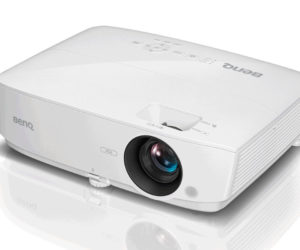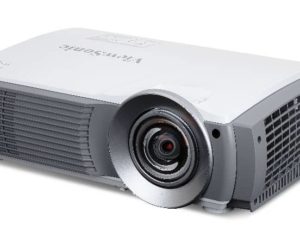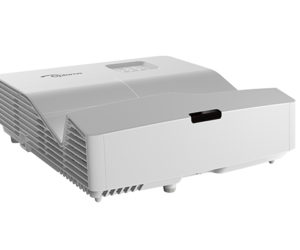Timing of Projector Purchases
K-12 schools in the U.S. (and many other countries) usually pick projectors by June for the next school year. Orders and bidding wrap up before summer, with installations happening over the break. Colleges and universities also buy projectors around this time, though their schedules are more flexible. Museums—often nonprofits or linked to universities or government organizations—also look for high-performance projectors and often get educational discounts.
About This Report
The 2019–2020 Classroom Projectors Report reviews 20 new projectors released in the past year, from budget-friendly models to high-end, large-venue projectors. Many models belong to “families” that differ in brightness, resolution, or features. A detailed specs spreadsheet lists both the reviewed projectors and their variations.
Some older award-winning models are included if still current, though they aren’t eligible for new awards. The report is sponsored by Epson America, which holds over half the North American projector market.
Purpose of the Report
Instead of covering every projector on the market, this report:
Highlights top-performing models
Helps educators and tech managers make informed decisions
Covers a variety of educational environments and feature needs
While some schools rely on state or multi-state purchasing consortia, this report provides independent reviews of excellent educational projectors.
Industry Overview
There are about 500 business and education projectors in the U.S., from brands like Epson, Sony, NEC, Optoma, BenQ, ViewSonic, Casio, LG, Panasonic, and Canon. Most target schools, colleges, and universities. Pico projectors are not included.
Projector Categories in This Report
11 High-Brightness Projectors: For large classrooms and auditoriums
8 Portable/Fixed Install Projectors: For smaller classrooms
3 Crossover Models: Good for both K-12 and higher education
5 Hi-End/Specialty Projectors: For advanced university or museum use (e.g., Epson L1755UNL at 15,000 lumens)
Ultra-short throw (UST) and interactive projectors usually come in smaller families (1–2 models).
Why “Families” Matter
Many projectors come in families with different resolutions or brightness levels. For example, the NEC NP-ME331W (3,300 lumens WXGA) has 7 siblings. Schools can choose a model that fits each room’s size, resolution, and installation needs.
Interactive and UST Projectors
Interactive projectors use pen or touch control and are often short- or ultra-short-throw:
Prevent blinding the presenter
Reduce shadows
Cheaper and easier to install than ceiling mounts
Many projectors offer basic wireless or MHL connectivity, but true interactivity means advanced touch or pen controls.
Light Source Options
Projectors may use:
Lamp
LED
Laser
Hybrid (LED/Laser, e.g., Casio)
Each type has pros and cons for brightness, lifespan, and maintenance.
3D Projection in Education
3D hasn’t gone mainstream in schools due to the cost of glasses and maintenance issues. It’s still useful for architecture, engineering, biochemistry, and flight simulation. Some 3D-capable projectors are available for schools that need them.
Report Highlights
Short overviews with links to full reviews
Previous award winners still on the market
New “Hi-End/Specialty Higher Ed” category
Evaluation of cost, light source, networking, and other key factors
Helps match projectors to classroom needs
Conclusion
This report is a curated guide to the most versatile and capable classroom projectors, helping educators and decision-makers find the right fit for their budgets, classrooms, and educational goals.
2019-2020 Award Winners: K-12 Classroom Projectors
K-12 Classroom Projectors
The K-12 category has the most projectors designed for schools. This year, we reviewed eight “standard” models suitable for classrooms and similar spaces. Some of these were also looked at for the Higher Education category because of their price, brightness, and features.
Projector Families
Each of these eight projectors belongs to a larger “family” of similar models with slightly different resolutions and features—together, they add up to around 50 models.
Resolution Choices
We include XGA, WXGA, and WUXGA projectors in our reviews. While the industry is moving toward widescreen (WXGA, 1080p, WUXGA), XGA projectors still sell well for two main reasons:
Lower cost – XGA models are usually cheaper than WXGA.
Easy replacement – Many schools replace older VGA, SVGA, or XGA projectors with new XGA models. They can use the same screens and mounts, which saves money.
Bottom Line
Sticking with XGA can cut costs, especially for large-scale replacements across a school or district, making it a practical and budget-friendly choice.
K-12 Classroom: Best Price/Performance – Epson PowerLite 109W

Epson PowerLite 109W
Epson’s PowerLite 109W is a standout in their 100 series, designed for classrooms. It’s bright (even beyond its 4,000-lumen claim) and earned our Price Performance award for packing a lot into an affordable package.
It comes with wired networking (supports Crestron RoomView, Control4), optional wireless, a mic input, and an audio amp that works even when the projector is off. There are plenty of video, computer, and audio connections, plus outputs for monitors or speakers.
Some minor drawbacks: no built-in media player for USB drives, and a 1.20:1 zoom lens that’s a bit narrower than higher-end models—but this isn’t usually an issue in most K-12 classrooms.
Bright, sharp colors, strong audio, advanced networking, a 3-year education warranty with rapid replacement, and an unbeatable $612 price make the 109W the best-in-class K-12 projector.
K-12 Classroom: Best Value – BenQ MW535A

BenQ MW535A – Best K-12 Value
The BenQ MW535A wins our K-12 Value Award for giving great performance at a super low price—around $370. It’s a WXGA DLP projector with 3,600 lumens, bright and clear for most classrooms.
Setup is easy with HDMI, USB, audio in/out, and even a serial port. Colors look good, too.
Limitations: no networking, no built-in media player, and a small 1.20:1 zoom with no lens shift. The 2-watt speaker is basic but works for most rooms.
If you don’t need network features, the MW535A is tough to beat—bright, reliable, and super affordable.
K-12 Classroom: Best Value Replacement – ViewSonic LS620X

ViewSonic LS620X – Best Replacement Projector
The ViewSonic LS620X is made for a big niche: replacing old classroom projectors. Millions of older projectors—VGA, SVGA, XGA, WXGA—are still in use, often with expensive bulbs that last only 1,000–2,000 hours. Replacing those bulbs can cost $300–$500.
The LS620X solves that with a 20,000-hour laser engine, higher brightness, and affordable replacement costs. It’s perfect for 4:3 classrooms, with an input panel including HDMI and all the basics, except S-video (though workarounds exist).
It has a short-throw lens, which might require moving a ceiling mount, but it can also work with a telescoping wall mount for older screens up to 72”. Color, sharpness, and brightness are all excellent.
Overall, it’s a reliable, affordable, and bright XGA laser projector, making it our Best Replacement Projector this year.
K-12 Classroom: Special Interest – Optoma EH330UST

Optoma EH330UST – Best In Classroom: Special Interest Award
The Optoma EH330UST is a solid ultra short throw (UST) projector and earns our Special Interest Award this year. While it’s the only UST in this report, it’s a very capable and good-value option.
This model is a standard UST projector—no finger or pen interactivity—but you can still use mobile devices or Miracast. That keeps the price lower, which works well for classrooms that don’t need full interactivity.
It can mount directly above a screen or sit on a credenza just below it. Brightness peaked just under 3,000 lumens—enough for most K-12 classrooms and many higher education spaces.
A big plus: the built-in media player supports Microsoft Office files, letting teachers present PowerPoint, Excel, and Word directly from a USB drive—something many USTs don’t offer.
Overall, it’s affordable, quiet, energy-efficient, and avoids blinding teachers with light up close. A very capable UST projector, nicely done, Optoma!